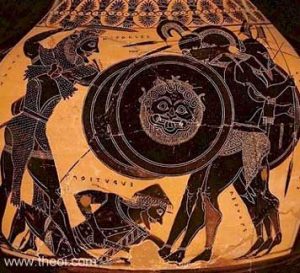Queerness is not new to mankind, it did not just suddenly appear like the Christian God’s Creation. There is no question of its existence; yet there seems to be a debate upon its viability as a lifestyle or narrative, as if queerness were a choice. Society simply does not allow for the freedom of choice – it does not allow for queerness to just be. In Shani Mootoo’s novel, Cereus Blooms at Night, the narrator, Tyler, longs to explore his true self, his femininity, but is prevented by fear of persecution.
All his life, Tyler does not fit the role of what a man should be – he is a caretaker, submissive, and gentle. For Lantanacamarian society (for our society), this is unacceptable behavior and those who identify with these traits are branded aberrant and grotesque. His differences are highlighted when Tyler’s colleagues titter and jeer at him, a constant reminder of his being an outcast. Even as a child, Tyler is aware of his queerness, often “ponder[ing] the gender and sex roles that seemed available to people, and the rules that went with them” (Mootoo 48). The tale of Chandin Ramchandin as told by Cigarette Smoking Nana offered Tyler a glimpse of queerness elsewhere but also served as warning that queerness is a perversion, not to be tolerated.
When Mala Ramchandin acquires a uniform for Tyler, stolen from a clothesline, Tyler feels an overwhelming craving to have his womanhood acknowledged, for his queerness to be validated by someone else. However, Mala Ramchandin does not fulfill his desires, treating him no differently than she normally would. At first, this infuriates Tyler as he feels she should take ownership to her role in the creation of this moment. Suddenly, he comes to the realization that, to her, “the outfit was not something to either congratulate or scorn – it simply was” (Mootoo 77). Her blasé behavior toward what is a pivotal moment to Tyler is actually what he covets the most: acceptance.
In her own queerness, Mala Ramchandin is Tyler’s post in rough waters. She is a rope thrown overboard to save a drowning soul. The reason her story encompasses Tyler so is because she is a kindred soul, another outcast. Together, the two of them form a community that enables them to finally feel a sense of belonging. Their friendship runs parallel to our own society, to the communities that celebrate queerness within themselves and within others. The sense of kinship struck from being a part of these communities is a balm to angry, open wound that is constantly picked at. It allows ‘members’ to explore who they are within a safe environment and to simply be themselves.
Yet, why is that, within these communities of acceptance, there too are rules and regulations of what queerness looks like, what it sounds like, what is it is?
